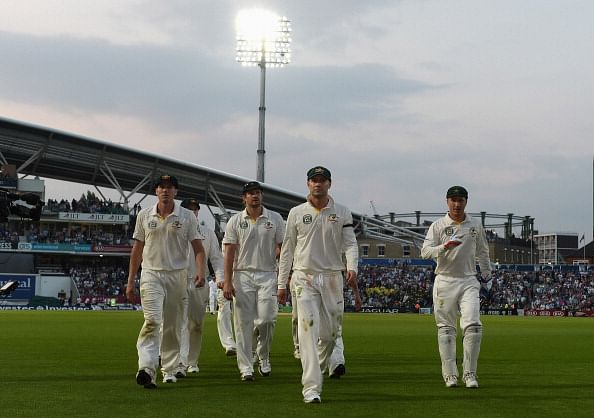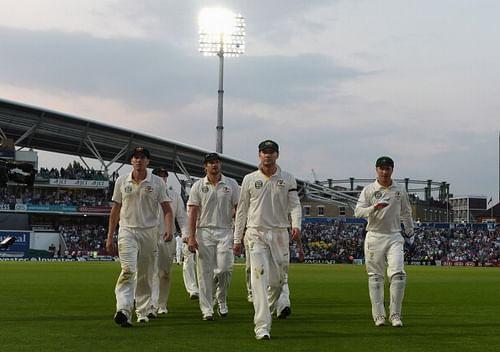
Decoding the 'bad light' laws in cricket

The 5th and final Ashes Test at the Oval ended in farcical scenes as the teams walked off due to bad light with England just a few runs away from victory (Getty Images)
Just 21 runs and 15 minutes away from a historical 4-0 win in the Ashes, the English team’s march to victory was halted when the umpires stopped play citing bad light, and consequently the Test was declared a draw. The sell-out crowd of 27,000 at The Oval made no attempt to hide their displeasure at the decision. It was probably an appropriate conclusion to a series which has been less about cricket and more about the unhappy state of the laws that govern the game.
To the cricket fans, stopping a match because the weather is gloomy is usually unfathomable. At times though it is genuinely required, as cricket balls which are hard and heavy, are bowled at very fast speeds. In Test match cricket, where red leather balls are used, it is difficult for the batsmen to pick them up when it gets dark, even while playing under floodlights. In one-day cricket white balls are used, which can be easily spotted under the floodlights.
But the laws pertaining to stoppage of play due to bad light have always been rigid. Legendary umpire Dickie Bird once famously said that the answer to bad light was “to play in all light, barring something close to Armageddon”. And he had a point. Until 2010, when the rules were changed by the MCC (Marylebone Cricket Club), if the umpires deemed the conditions to be too dark for play to continue, they would ask the batsmen if they felt the playing conditions were dangerous. If the batsmen said yes, play would be halted till conditions improved, and if they said otherwise, play would go on.
The problem with this law was that the batting side always ended up using it to its tactical advantage. For example, a side which was struggling with the bat would always accept the offer to leave the field, irrespective of whether the batsmen actually felt any danger or not.
In 2010, changes to Laws 3.8 and 3.9 meant that umpires no longer needed to “offer the light” to the batsmen. They now had the sole power to suspend play when they considered it to be either dangerous or unreasonable.
Law 3.5.3 Suspension of play for adverse conditions of ground, weather or light
b) If at any time the umpires together agree that the conditions of ground, weather or light are so bad that there is obvious and foreseeable risk to the safety of any player or umpire, so that it would be unreasonable or dangerous for play to take place, then they shall immediately suspend play, or not allow play to commence or to restart. The decision as to whether conditions are so bad as to warrant such action is one for the umpires alone to make.
The use of light meters to determine if sufficient light is available for play to continue is much debated.
What is a light meter?
It is a device having a light sensor at one end and a window at the other end which displays the reading that indicates the current light conditions. To use the light meter, the umpire will stand at one end of the pitch and point it towards the sight-screen to take the reading.